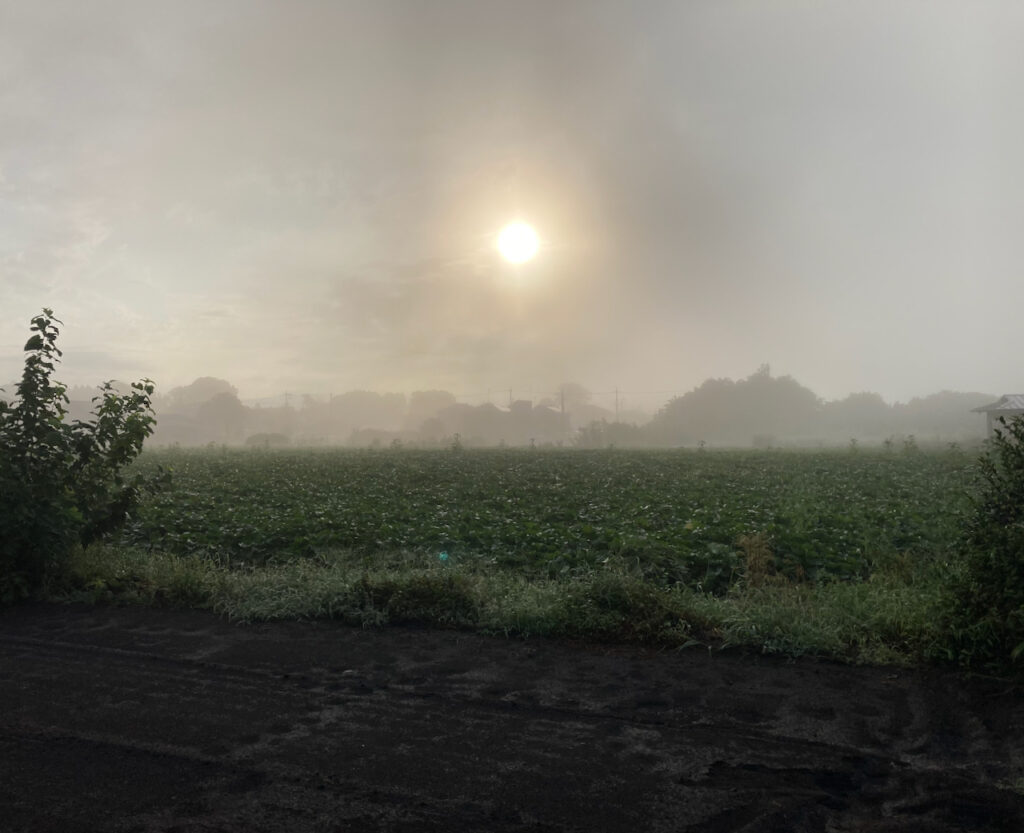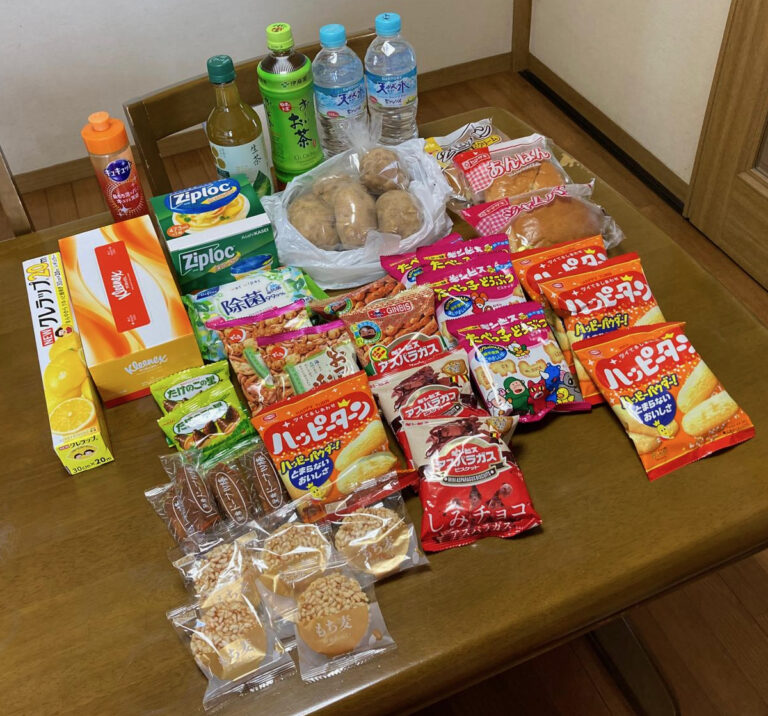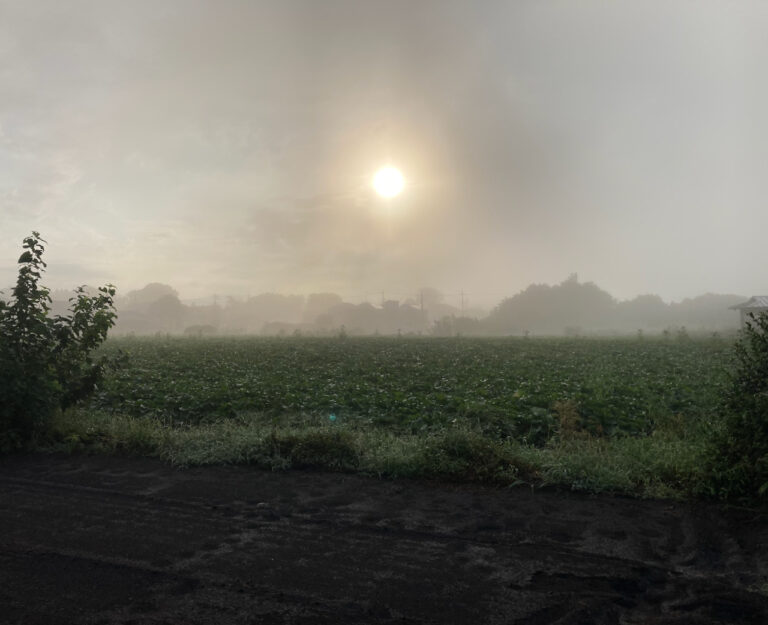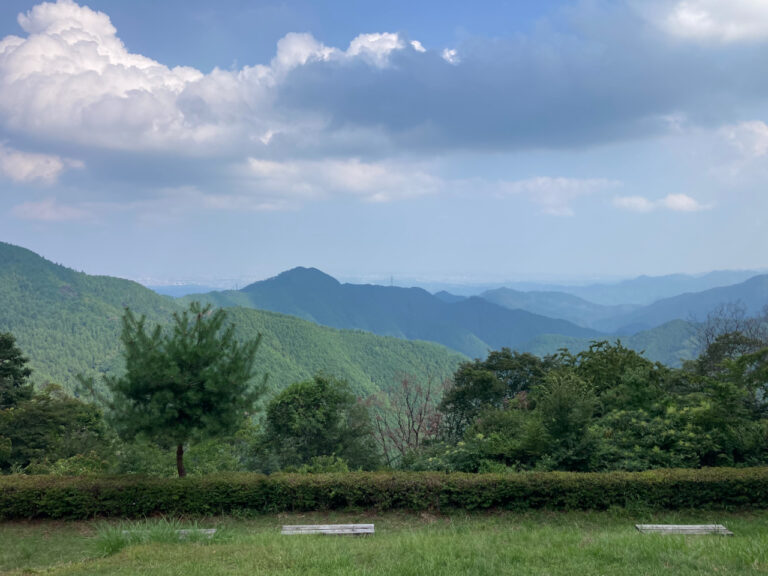
A post on this blog from many years ago called Mount Yamizo was about a cycle trip that I took for two days and one night to the highest point in Ibaraki Prefecture. Personally, I think it’s one of the best things I’ve ever written and I wish more people had read it at the time, but that’s by the by.
Having broken into a temple outbuilding and spent the night on the summit of Mt. Yamizo, I woke early the next morning to photograph the sunrise. Another person, who had either hiked or driven up the mountain that morning, engaged me in conversation as we observed the scenery from a castle-shaped lookout tower, although in the blog post, I rather glossed over what we talked about.
As far as I can remember, he was in his fifties or sixties, and basically, his conversational gambit was to bombard me with three of the most common things that Japanese people are in the habit of saying to foreigners – statements so common that I would argue for their inclusion in the category of so-called ‘microaggressions.’
Microaggression is a term that I believe was invented, or at least popularised, by Arudo Debito, the longtime campaigner against discrimination, and while it takes various forms, one of them is the act of saying something that a foreigner may interpret as patronising. For example, many is the time I have been told by someone Japanese that I am very good at using chopsticks. Given the fact that I have been doing so since I was a child – albeit rather ineptly – this angers me, thereby contradicting the original intention of the Japanese person, which was to pay me a compliment.
The three microaggressions that the man on Mt. Yamizo chose to employ involved telling me that: 1) Japanese is a very difficult language, 2) Japan is a very small country, and 3) Japan has four seasons.
The Japanese are perversely proud of the fact that their language is different enough from Latin languages in particular that, while not inherently difficult, it is hard for many foreigners to learn. They also labour under the misapprehension that Japan is a tiny island with an even tinier proportion of habitable, cultivatable land, when in reality, it ranks a respectable 62 out of 195 in the Wikipedia list of countries and dependencies by area (it is, for example, about 50% bigger than the UK). The assertion that there are four seasons in a year had always struck me as blindingly obvious and in no way unique or even interesting, so as you can imagine, I was suitably annoyed by this triple-whammy of microaggressively patronising statements.
However, a few years later when yet another Japanese person had knowingly informed me, as if I didn’t know already, of the whole Japan-has-four-seasons thing, I posted to the Ibaraki Facebook group, saying something along the lines of, ‘Oh my God, if another Japanese person says that to me, I swear I’ll punch them in the face! Don’t they realise that everywhere else is the same?’ the replies that I received were very interesting, in that people from various parts of the world said that where they grew up, there really weren’t four seasons, and that coming to Japan had therefore been a pleasant surprise and a new experience.
Thus chastened, I have since been rather more forgiving of Japanese people who boast about their seasonal superiority (having said that, if there’s somewhere in the world where there are five or more seasons, let me know, as I may be able to use this as conversational ammunition in future). In fact, the longer I live here, the more I have come to appreciate not so much the number of seasons, as the fact that the dividing lines between them tend to be more clearly defined. And for me, the most obvious transition is between summer and autumn.
This year was perhaps an exception, in that it was the hottest summer on record in a country whose summers were already excessively hot in the first place. But the point at which summer mutated into autumn was obvious enough that I could have stuck a pin in a calendar to mark the date.
September 18th had been swelteringly hot and humid. In the late afternoon there was a huge thunderstorm that passed directly over the town where we live (a bolt of lightning during a similar thunderstorm two or three years ago broke our TV set, although thankfully, this time our newish TV survived unscathed). Then, joy of joys and miracle of miracles, when we awoke on the 19th, the skies were clear, the humidity had vanished, and the temperature was a good seven or eight degrees cooler.
In the UK, the weather changes all year round, and even when you think that a particular season has passed, you are often deceived and instead there is a gradual fluctuation between the two seasons that lasts for weeks at a time. Here in Japan, though, the overnight phenomenon of summer magically mutating into autumn happens almost every year. The weather since the 19th has at times been hot, but it is a completely different kind of heat. More to the point, after three and a half months of lethargy, sweating, and either grinning and bearing it or seeking out the nearest air-conditioned building, I can think clearly again and have regained a semblance of my usual energy and motivation. The sunrises and sunsets are another obvious sign of this change, and from the muggy haze of midsummer, the clouds are now clearly defined and illuminated in brilliant, luminous hues.
As usual, I said to a friend of mine the other day that I will never complain about winter in Japan again. As usual, he laughed and said, ‘You just wait,’ and indeed, when it’s freezing cold in the house with ice on the inside of the bedroom window and chilblains on my fingertips, my long-term memory will be meaningless and I will once more long for the freedom to wear shorts every day and the laundry to dry in minutes.
Speaking of long-term memory loss, this summer was the first the Muzuhashis had spent in Japan since 2021, so perhaps we had just forgotten what it was like. Either way, the plan is to fly south – in other words, to the southern hemisphere – next summer for at least a few weeks.
In Japanese, natsubi (夏日) refers to a day when the temperature is 25° Celsius or more, manatsubi (真夏日) to one when it is 30° or more, mōshobi (猛暑日) to when it is 35° or more, and kokushobi (酷暑日) for 40° or more. Who knows, in 10 or 20 years’ time, the Meteorological Agency may even have to invent a new word for 45° and over. For now, I am revelling in the balmy temperatures, low humidity, and endless sunshine of autumn – my favourite of Japan’s four seasons.



